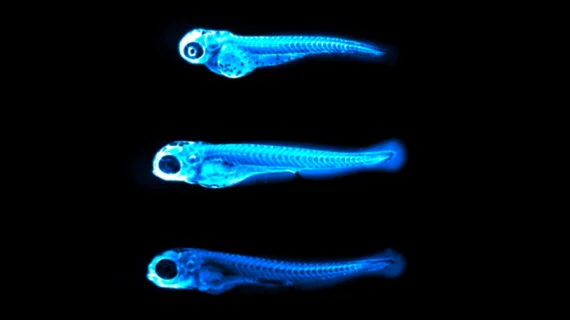Researchers at the Carnegie Institution for Science, Johns Hopkins University and the Mayo Clinic have reportedly leveraged “state-of-the-art” genome editing to track lipoprotein movement in real time, allowing scientists a glimpse into how cholesterol moves, accumulates and gathers to build plaque.
Carnegie’s Steven Farber, alongside his team, developed the “LipoGlo” system to monitor Apolipoprotein-B (ApoB), the protein that shuttles cholesterol and triglycerides around the circulatory system. LipoGlo tags ApoB in the blood with a glowing enzyme similar to the one that causes fireflies to light up at nighttime.
“Statin drugs have helped a lot of people and saved many lives, but folks still die of cardiovascular disease every year, so there is an urgent need for new medical strategies to understand and prevent arterial plaque buildup,” Farber said in a release. “Our LipoGlo system allows us to study ApoB in tiny larval zebrafish, enabling us to try thousands of potential pharmaceuticals and to find the needle in a haystack that could be the next treatment for this terrible disease.”
The team picked larval zebrafish, he said, because of their size. Using the LipoGlo system they monitored the movement of ApoB complexes in the fish, able to scrutinize the concentration, size and distribution of lipoproteins in samples as small as a near-microscopic droplet of blood.
“This type of whole-animal screening is not possible in any other vertebrate,” Farber said.
Right now, physicians assess a patient’s risk of arteriosclerosis by measuring blood concentrations of lipoprotein components like fat and cholesterol, but the researchers said that approach is imperfect and can sometimes underestimate a person’s risk of arteriosclerosis. With LipoGlo, they can directly observe various components of cholesterol flow in a person’s blood—even in a tiny sample.
Farber and his colleagues also discovered a gene in their research—pla2g12b—which seemed to have a huge impact on the size and number of ApoB-containing lipoproteins in the zebrafish. But they said the gene remains a mystery to them, and they’re unsure of how it works.
“Although there is much more work to be done to fully understand the processes underlying atherosclerosis, these findings show that our LipoGlo tool has the power to transform our understanding of lipoprotein biology, which will have important implications for future strategies to treat heart disease,” Farber said.
Farber et al.’s work was published in Nature Communications July 31.

